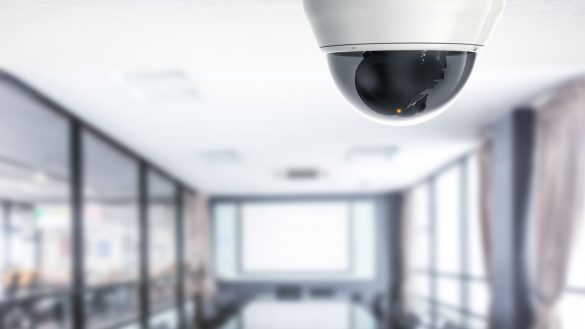services

Video Surveillance
The goal of a video surveillance system is to provide live and recorded situational awareness or usable and prosecutable
images of an individual. These images must have a defined video quality and usable frame rate. The video must be
available for recall at a security operation center (SOC), redundant SOC, or mobile device for a defined period of time.
IP (Internet Protocol) surveillance is a digitized and networked version of closed-circuit television (CCTV). In an IP
surveillance system, an IP camera records video footage and the resulting content is distributed over a network.
- Enterprise based
- Cloud Based Storage
- Edge Based storage
- Network Video Recorder
- Digital Video Recorder
- Megapixel
OVERTCAM - Thermal
- Fixed
- Pan / Tilt / Zoom (PTZ)
- Overt / Covert
- Motion activated
- Remote viewing
Active Shooter Detection
The goal of an Active Shooter Detection system is to detect the precise location of an active shooter and to report these
findings to officials. If multiple shots are fired, the system must provide this information to authorities for appropriate
first responders to allow them to know the exact location of the last shots.
Guardian Indoor Active Shooter Detection System (SDS)
An active shooter is an individual actively engaged in killing or attempting to kill people in a confined, populated area. In
most cases, active shooters use firearms and there is no pattern or method to their selection of victims. Active shooter
situations are unpredictable and evolve quickly. From its inception, SDS was created with one purpose in mind: to
produce the world’s most accurate gunshot detection systems. SDS solutions give customers immediate notification of a
shooting event – without complex and expensive interpretation. What has resulted is our pioneering Guardian Indoor
Active Shooter Detection System — the first stand-alone, smart sensor for indoor active shooter events.

Intrusion Detection System
The goal of Intrusion detection System (IDS) is to detect intrusion – unauthorized entry – into a building or area. IDS
are used in residential, commercial, industrial, and military properties for protection against burglary (theft) or property
damage, as well as personal protection against intruders. The system must detect the intrusion but also alert authorities of
the intrusion and provide location information as the intruder moves about the unauthorized location. Some of our
proven solutions include:
- UL2050 SCIF
- UL Central Station Monitoring
- Supervised IDS alarm points
- Redundant IDS communications
- On Premise monitoring solutions
- IDS integration with access and video solutions
- Standalone IDS systems

Turnstiles
The goal of a turnstile solution is to ensure that only one individual enters a controlled area with one credential. The
outcome is preventing tailgating into a controlled area. The solution must take into account the following codes from
NFPA, ADA, and BOCA. The turnstiles should also match the building aesthetics to be properly deployed. Some types of
turnstiles include:
- Optical
- Barrier arm
- Glass wall
- Angel wing

Access Control
The goal of an access control system is to restrict and track the entrances of a property, a building, or a room, to ensure
only authorized persons are able to gain access at authorized times. Some of our proven solutions include:
- Cloud Based managed access control solutions
- Enterprise premise based solutions
- Biometric Based Solutions
- Credential Based Solutions
Multi-Factor based solutions - FIPS201 HSPD12 based solutions
- Identification Badge Production

Hosted & Managed Security Services
CJSS offers video surveillance as well as access control solutions in a hosted cloud environment. A key benefit to the CJSS
cloud based access and video solutions package is IT cost savings. Businesses, no matter what their type or size, exist to
earn money while keeping capital and operational expenses to a minimum. With cloud computing, you can save
substantial capital costs with zero in-house server storage and application requirements. The lack of on-premises
infrastructure also removes associated operational costs in the form of power, air conditioning and administration costs.
The CJSS solution is scalable from one camera or access point to thousands of cameras and access points.
Contract Vehicles

peppm Technology bidding & purchasing program
Technology and Bidding Purchasing Program recognized in Washington DC, Maryland and Virginia http://www.peppm.org/
The PEPPM Program, is the result of a nationally affiliated group of Agencies,
coordinated by the Central Susquehanna Intermediate Unit, a.k.a. “CSIU”, which seeks and awards bids on technology equipment, software and supplies on behalf of schools, state agencies and libraries. This program called PEPPM (pronounced PEPum), is a
national technology bidding and purchasing program for schools, agencies and libraries. The educational agencies soliciting the bids for their respective jurisdiction have
individually awarded bids in their respective states, based on their own applicable statutes. However, the Agencies come together nationally for the purpose of aggregating their demand for product and their buying power. In so doing, they have
coordinated the bidding process with each other, and have centrally evaluated the bid responses. There after they coordinate on publicizing the contracts to school districts and other eligible agencies.

maryland
The Maryland Hardware 2012 Master Contract
covers 6 functional areas. This contract vehicle allows agencies to procure the
following:
1. Servers and Associated Peripherals
2. Printers and Associated Peripherals
3. Network Communications Equipment
4. Installation and Training Services
5. Manufacturer’s Extended Warranty
6. Security, Cameras, and Associated Peripherals
More information on this contract vehicle is available here


